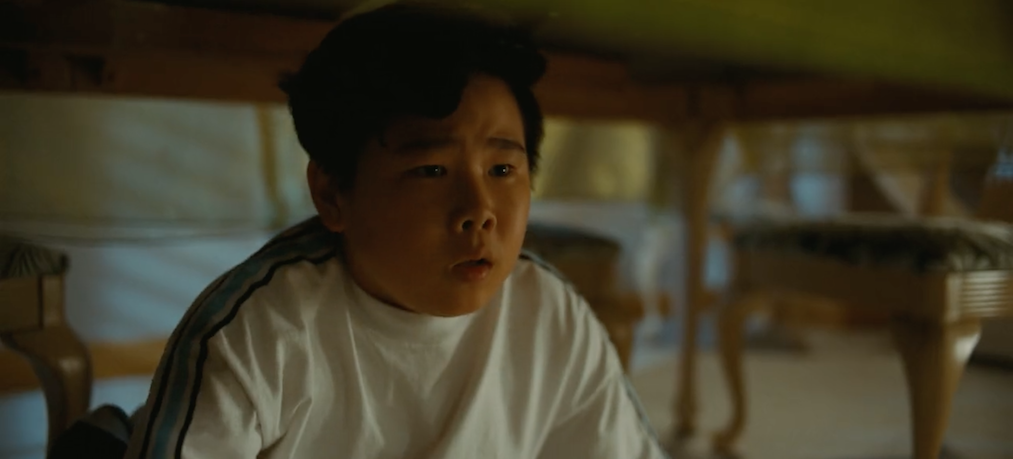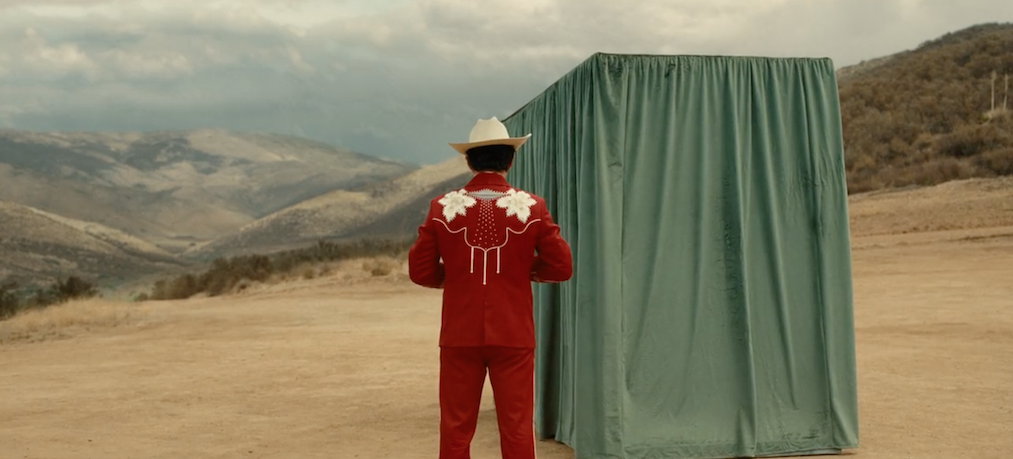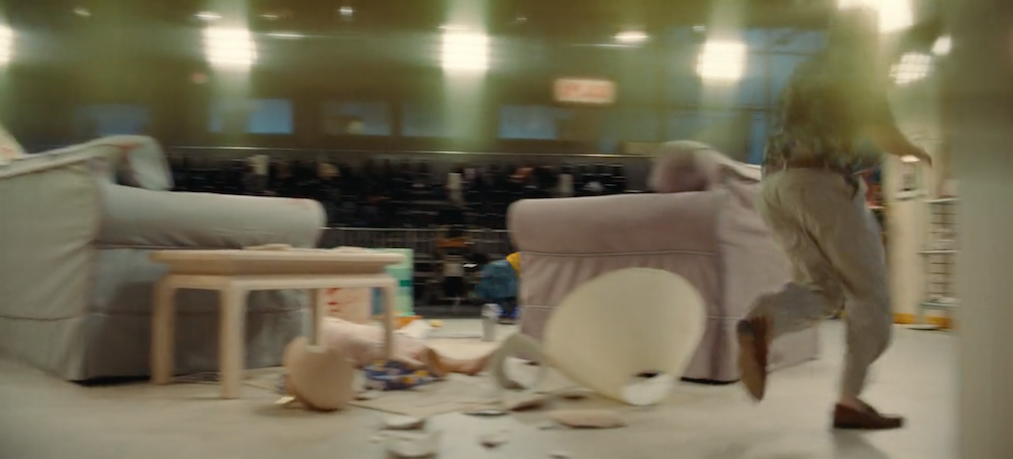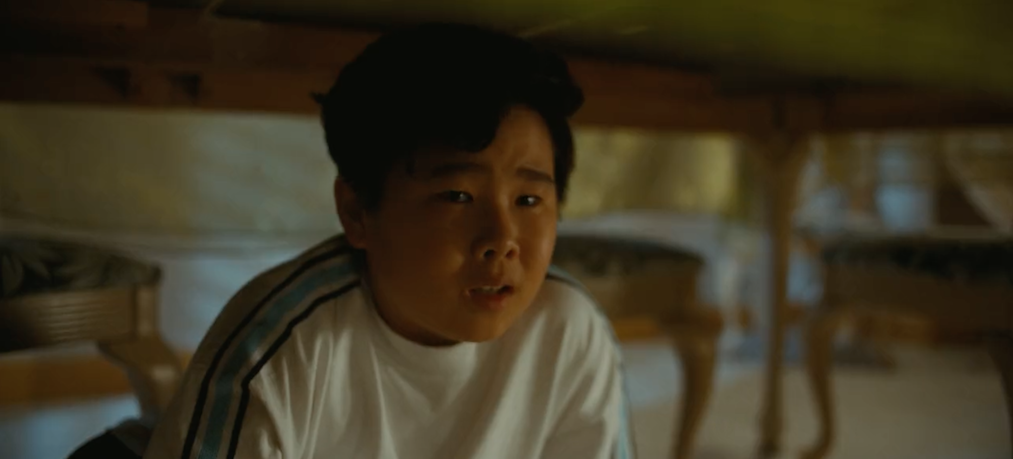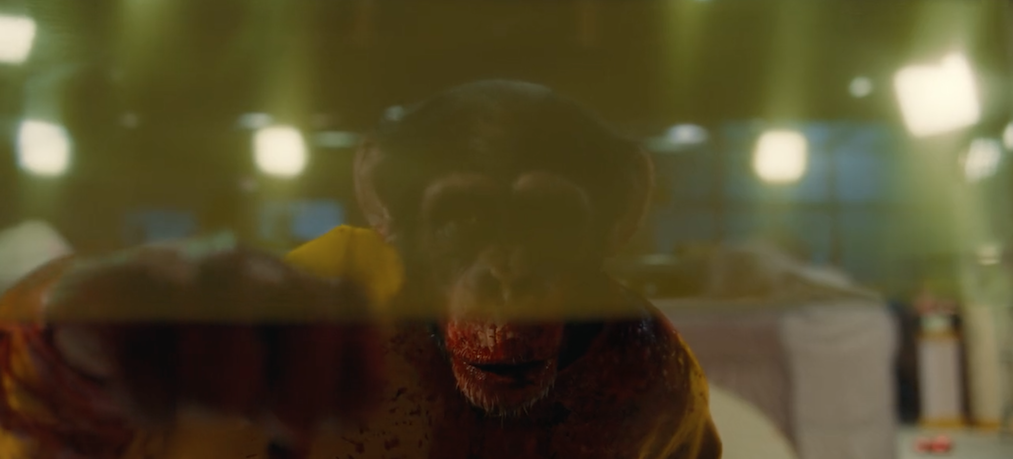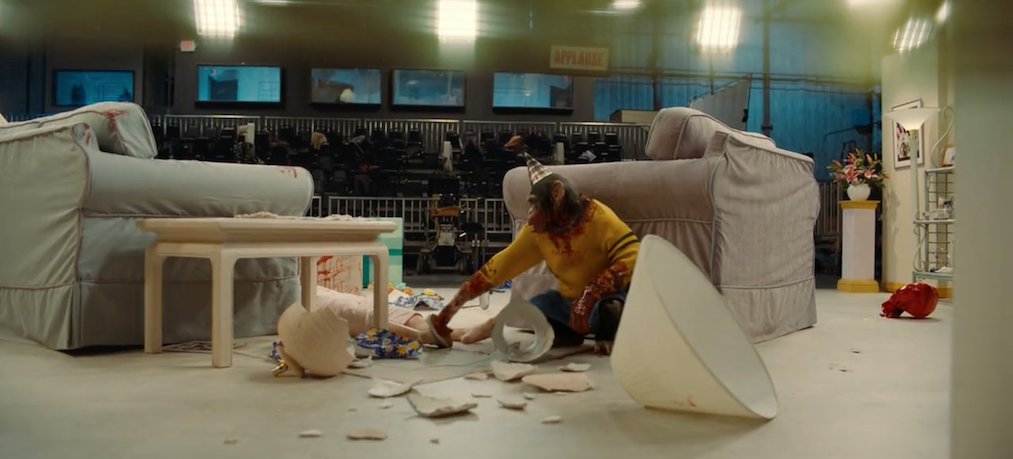Why is “Nope” so Confusing?
Spoilers.
The first time I watched Jordan Peele’s Nope, I was one of the idiots who didn’t quite get it. I didn’t fully understand how the subplot about Gordy the killer ape fit in with the rest of the story. Not getting every detail of a film’s plot doesn’t always bother me if the film makes emotional or thematic sense, but Nope was confusing in the opposite way: the story fit together but the themes, it seemed, did not. Afterwards, when I absorbed some takes that plausibly explained what the ape plot was about, I felt pretty stupid. The explanation seemed so obvious, so how did I miss it? It all became clear on my second viewing – that is, it became clear why I was confused.
Nope is mostly about the attempts of Hollywood horse wranglers OJ (Daniel Kaluuya) and Emerald Haywood (Keke Palmer) to get video proof of the UFO abducting horses from their ranch in the California desert. Given that premise, it’s a surprise when the film begins where it does: on the set of a 90s sitcom, where a performing chimpanzee has gone nuts and killed a bunch of people. This bloody scene is flashed-back-to throughout Nope, and even when it’s clear that the terrified child actor hiding under the table will grow up to be the Haywoods’ neighbour Jupe (Steven Yeun), the connections between this scene and the greater story are almost wholly thematic.
Young Jupe (Jacob Kim) hiding from Gordy the chimpanzee.
The themes in question deal with man’s folly in thinking he can exploit nature for cheap spectacle. The Shyamalanian twist of Nope is that the UFO is not a spaceship but rather a single organism, a flying-saucer-shaped monster with a giant mouth that can suck people and horses into it. OJ, skilled animal trainer that he is, turns out to be uniquely suited to wrangling the creature, but only by way of a professional ethic that involves appeasing animals, not controlling them. As OJ puts it, “You can’t [tame a predator]. You gotta enter an agreement with one.” The audience is led to infer that if the creators of that 90s sitcom took OJ’s approach, they could have avoided the chimp-on-human massacre which Jupe was so lucky to survive.
The dramatic irony that I missed on my first viewing is that Jupe’s survival of the chimp attack did not stop him from exploiting the UFO monster in much the same way the chimp was exploited by the sitcom. Present-day Jupe runs a country-and-western-and-aliens-themed amusement park and he wants the UFO-monster as his main attraction. At the film’s center is the unveiling of Jupe’s new “family show,” in which he uses horses as bait to lure the UFO into the plain view of his audience. This ends about as badly as any performance possibly could: with the audience digested alive by an otherworldly creature. This scene is crucial to Nope for a number of reasons: the true nature of the UFO is revealed here, Jupe’s subplot is wrapped up (he’s eaten too) and the thematic point about man and nature is driven home.
Adult Jupe (Steven Yeun) introduces his “family show”
Internet theories open up Jupe’s subplot to even more significance. Jupe’s doomed amusement park act is preceded by Nope’s final, extended flashback to the chimp attack. This sequence is deceptively simple: young Jupe hides under a table while Gordy stalks around the sitcom set. When Gordy chases Jupe’s adult co-star offscreen, Jupe’s attention is briefly distracted by a bloody shoe standing strangely upright, as if defying gravity. Gordy returns, notices Jupe, but instead of attacking the boy, Gordy gives him a fist bump and then is shot dead by police. The narrative does not explain the floating shoe, but one theory has popped up online that does so cleanly, though perhaps not accurately. Later on, the film introduces a rule: that looking at the monster will get it to attack. Apparently, this rule doesn’t apply strictly to flying monsters: not making eye contact is a trick OJ uses to maintain a peaceful relationship with animals. According to that online theory, the inexplicable floating shoe distracted Jupe from looking Gordy in the eye, and therefore, unbeknownst to Jupe, the chimp spared him. It wasn’t only the shoe: when Gordy gets closer, a sheer tablecloth provides an obstruction between his eyes and Jupe’s. The great irony, according to this theory, is that Jupe went his whole life believing he survived the chimp attack because of his special connection to animals, when in fact the shoe and the tablecloth prevented him from making a mistake a true animal person like OJ would know not to make: looking the animal in the eyes. It was hearing this particular theory that inspired me to see the movie again, to pick up on what I missed.
But after a second viewing, I’m not sure I ever really missed that much, or, if these really were Peele’s intentions, then Peele makes certain choices that make not missing his points unnecessarily difficult for the viewer. While it’s obviously unmistakeable that the chimp scene is meant to mirror Jupe’s catastrophic show, Jupe’s belief in his ability with animals is never stated, even indirectly; in fact, some of his dialogue even contradicts this reading of his character. The irony of Jupe’s fortuitous lack of eye contact with Gordy is something that could only be inferred in retrospect, without much prompting from the film.
From Peele’s shot selection, it’s not easy to conclude that the distraction of the floating shoe saved Jupe from looking into Gordy’s eyes. The chimp attack is handled in a simple shot-reverse-shot style between a quarter-angle close-up of Jupe hiding under the table and Jupe’s POV of Gordy terrorizing the set. The second shot is without a doubt Jupe’s POV; it pans as Jupe’s gaze follows Gordy from left to right:
Once Gordy has chased the man off-camera, Jupe spots the shoe. But when Gordy returns, Jupe’s attention moves back to Gordy. There’s even a cut to Jupe with the purpose of showing Jupe’s attention moving from the shoe to Gordy:
After Jupe’s gaze is back on Gordy, Gordy looks straight into the camera; in other words, straight into Jupe’s eyes. The order of shots indicates that Jupe was distracted by the shoe only while Gordy was off-screen; once Gordy returned, Jupe’s POV shifts to Gordy and never returns to the shoe. Clearly, going by what’s actually on screen, there’s no way to draw the conclusion that the shoe provided a distraction from Gordy’s eyes. Quite the opposite, in fact. The chimp-boy eye contact is extended and tense as Gordy closes in on Jupe:
When Gordy stops mere inches away, a sheer tablecloth partly obstructs Jupe’s view of his eyes:
Since the tablecloth is there, and later the film places so much importance on avoiding eye contact with animals, it’s plausible the obstructed eye contact is meant as an important aspect of the scene. Up close, rather than attacking Jupe, Gordy motions to himself and chirps, trying to communicate something, and then gives Jupe the fist bump. For some reason, Jupe is spared from Gordy’s violence; was it because the tablecloth prevented him from looking the chimp in the eyes?
If it was, then Peele has done a terrible job of making that clear to his audience. For one thing, all the talk about avoiding eye contact with animals comes after the chimp attack scene. So, the only way for an audience member to see the importance of eye contact in the Gordy scene is in retrospect, once the topic comes up later in the film. But even if the eye contact rule had been established at the outset, the shots discussed above muddy the waters. To fully get the irony of the barely-missed eye contact, the audience would first have to determine that the extended eye contact between Jupe and Gordy that does take place doesn’t really count for some reason, and that the tablecloth, though it was sheer enough for us to see Gordy’s eyes, was also opaque enough to stop “proper” eye contact from occurring. It’s a lot for an audience to put together, especially after the scene has long passed.
On the other hand, it’s not immediately clear that any of this was on Peele’s mind at all. From this reading of the scene, all this business about eye contact is to set up the irony that later in life Jupe mistakenly believes he has a special ability with animals, though Jupe himself never refers to such an ability (he doesn’t much refer to animals at all, in fact). It’s because of this mistaken belief, supposedly, that Jupe thinks he can manipulate the UFO monster for his act. But in order for this interpretation to make sense, Jupe would have to understand that the UFO is an animal, and it’s not obvious that he does. When he’s introducing the act to his audience, he refers to the UFO as a spaceship controlled by alien “viewers.” It’s possible Jupe knows the UFO is an animal and is lying to the audience, but that’s never even implied. Keep in mind that at this stage in the plot, the twist about the UFO hasn’t been revealed. Jupe’s introduction to his show reinforces the red herring that the UFO is a spaceship; when we learn it’s really an animal, Jupe is already dead. Once again, if the audience is meant to draw the conclusion that Jupe came away from his experience with Gordy thinking he had a special connection with animals, and that this belief is his ultimate downfall, then they are only able to do so in retrospect, and by focusing on some elements while ignoring others.
Although there isn’t much in the film to justify this theory about Jupe’s motivation, the theory is still very appealing, because without it, things go back to being vague and ambiguous. If the shoe doesn’t fulfill the narrative purpose of distracting Jupe from Gordy’s eyes – and there’s every indication that it doesn’t – then it is just an unexplained, creepy image. However, when it comes to Jupe’s subplot, I think there’s still the possibility of some dramatic irony, albeit for different reasons than the eye-contact angle. That 90s sitcom has an unusual, doubled premise: it’s about a white family with both an Asian son and a pet chimp. Nope begins with this quotation from the Old Testament: “I will cast abominable filth upon you, make you vile, and make you a spectacle.” Perhaps Peele wants us to consider that, in the context of a 90s sitcom geared at white families, the Asian boy’s otherness is presented as a “vile spectacle” like that of a zoo animal. When Gordy approaches Jupe after the attack, the ape tries to communicate something before giving him that fist bump.
Is Gordy expressing solidarity with the boy, from one being exploited by the white showbiz industry to another? If so, then Jupe himself later becoming a purveyor of “vile spectacle” is certainly ironic. At first glance, the film doesn’t appear to have a lot to say about race, but it is about a black business all but forgotten by Hollywood. The Haywoods – whose name indicates an alternative to Hollywood – want to strike it rich with that UFO footage and save their horse wrangling business, a business which, to Peele, represents the legacy of blacks in the film industry (the Haywoods’ ancestor was the jockey in “The Horse in Motion,” one of the first-ever moving pictures). Unfortunately, Nope loses coherence in delineating how exactly the Haywoods are any better than Jupe or Hollywood when it comes to their engagement with “vile spectacle.”
Coherence is very important for the kind of big-budget, crowd-pleasing blockbuster that Nope is sometimes trying to be. A clear template for Peele here is Jaws: the Haywoods assemble a mismatched film crew that includes a smartass tech expert (your Richard Dreyfuss stand-in) and a grizzled DOP (your Robert Shaw). In Jaws, the heroes catch a shark; in Nope, the heroes “catch” a monster on camera. But Peele stops short of aping Jaws’ clarity. Jaws had a single protagonist (Roy Scheider) with a simple goal – stop a shark that’s killing people – to accomplish which he had to overcome a simple conflict: his fear of the ocean. Yes, one could make inferences about what the shark “meant” to American culture at the time, but such inferences are pretty low in the list of things that make Jaws a memorable or effective movie. With Nope, Peele seems more focused on what everything means than on telling a story with maximal impact. OJ and Emerald don’t have to overcome anything about themselves to catch the monster on camera; actually, OJ even has a special advantage because of his skill as a horse trainer… not a lot of drama, there. The climax unfolds with little drama but a lot of action, but action which, we sense, is a metaphor for something. In shirking character for meaning, Peele splits the difference between a relatable human story and the kind of enigmatic thinker that rewards repeat viewings.
In theory, Nope could rely on theme over character and still succeed as a crowd pleaser, but whether it could do so with themes that are unclear is another question (or perhaps not much of a question, going by the film’s mixed reception). The point that it isn’t wise to exploit animals for spectacle is clear enough, but not well-dramatized. While OJ’s dialogue about “entering an agreement” with animals describes a meaningful distinction between him and Jupe, the actual events of the film do not. Jupe’s strategy – and probably the trainers of that chimp – is to offer the animal a reward (food) to get the animal to perform. That sounds like an “agreement” to me. OJ’s ultimate plan, however, involves tricking the monster by pretending to offer up his horse as food. And OJ and Emerald’s goals are not much different than Jupe’s: they want to use their footage of the monster to get rich. It’s obvious we’re supposed to think OJ’s approach is nobler than Jupe’s, but it’s not obvious why we should think that, especially when his plan ends up getting both the DOP and the monster killed. It’s hard to come away thinking the Haywoods did much better than Jupe or the producers of that sitcom, though it’s clear we are supposed to think that they did. Jaws’ simple heroism is sorely lacking, here.
The monster isn’t only a metaphor for animals exploited by show business, it’s also a metaphor for “vile spectacle” in a more general sense, which is why, I think, we’re supposed to be excited when it’s killed (certainly, this metaphor-mixing diminishes Nope’s impact and coherence). Peele’s precise disposition toward “vile spectacle” is never very clear. The Haywoods’ video of the monster would be no less a spectacle than Jupe’s family show, so are the Haywoods vile? If not, why not? Another way of looking at it is that spectacle is a dangerous but morally-neutral thing, like a wild animal. The grizzled DOP, Antlers (Michael Wincott, sounding more like Tom Waits than ever) warns the Haywoods that chasing after the perfect shot of the monster (i.e. the perfect spectacle) is “the dream you never wake up from.” Later, when Antlers achieves that perfect shot, he announces “we don’t deserve the impossible” before letting the monster eat him and his camera. Perhaps the “perfect shot” is so powerful and dangerous that it’s better off destroyed, or, perhaps only people with the fortitude of OJ and Emerald should ever try to engage with such dangerous spectacle. Maybe when it comes to spectacle, competence is more important than right or wrong, but then the Old Testament quote muddles things with morally black-and-white words like “abominable filth” and “vile.” All of these ambiguities and seeming contradictions would be interesting to consider as the subtextual elements of a straightforward story, but as the film’s primary focus, they leave Nope stranded in a murk.
Now, does any of this make Nope a bad movie? I don’t think so. It is frequently creepy and funny and sometimes thrilling, not to mention technically dazzling. The twist that the UFO is a flying-saucer-shaped monster is pretty clever, and the monster looks great. Keke Palmer has incredible movie star charisma. But I think in his efforts to make a film that’s simultaneously a crowd-pleasing action story and a puzzle box of unsolvable ambiguities, Peele hasn’t struck the perfect balance. The only other director I can think of who makes movies like this is Christopher Nolan, but Nolan’s mysteries are often centered in the inner conflicts of his characters. The characters of Nope don’t have inner conflicts, and in that way they resemble the simplistic super heroes of the latest CGI-driven blockbusters. In other words, they’re more spectacle than human.


